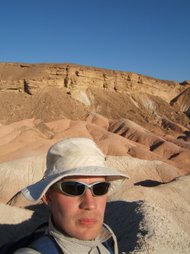The decision (or guidance: in fact, the final decision has not yet been made, with the guidance subject to consultation and appeal) was made by the National Institute of Health and Clinical Excellence (Nice), which decides on the cost-effectiveness of treatments and whether they should be available to patients on the NHS. According to trial data submitted by the drug manufacturer, Roche, the drug can extend the mean lifespan of people diagnosed with advanced bowel cancer from 19.9 months on chemotherapy alone, to 21.3 months with chemotherapy and avastin. This is by no means a miracle cure or wonder drug. This is a six-week gain, but it comes at a cost: the drug costs up to £21,000 per patient.
Barbara Moss, a survivor of bowel cancer, appears in both the BBC and Guardian articles. The Guardian says:
Mrs Moss said the National Institute for Health and Clinical Excellence (Nice) had put a "value on life" after it said the price was too high for the extra benefit it gives patientsWhile Mrs Moss is quoted in both pieces as saying:
It seems immoral to me that, as a result of negative NICE decisions like this one, people's choice of living or dying depends on whether they can afford a drug, because it isn't available to them on the NHS.It's difficult not to have some sympathy for this point of view. But someone has to put a "value on life" (or in fact, a thing called a Quality Adjusted Life Year, QALY). Otherwise Roche could come up with a life-saving drug that cost £1 trillion per patient, and the NHS would have to fund it because you "can't put a value on life". Ultimately, the question is not just about avastin. There is only a limited amount of money for the NHS to spend on drugs, so if avastin gets funded something else (with probably greater benefit) doesn't get funded . These are clearly not easy decisions to make, which is why we have Nice to do it in the first place.
My point here is not that Nice have necessarily got this right (I'm not qualified to judge), or even that the QALY approach is the best possible one. The point is that Nice is doing a difficult, unpopular and necessary job. Accusing them of betraying cancer patients, when what they're actually trying to do is get the greatest benefit from a limited budget, is not really helpful to anyone.

